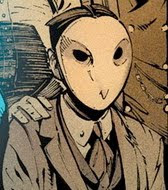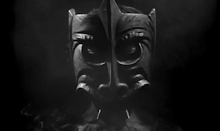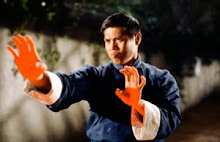
This is the lengths Inglorious Basterds have driven me to. I found myself being willing, nay looking forward to, reappraising Cat People. After watching Tarantino practice his alchemy and turn what was neither Schrader’s or Bowie’s finest moment into pure cinematic gold, I couldn’t help but be curious whether or not I was missing something.
I’d just seen Cat People fairly recently, a little over a year or so ago, and I can’t say I was impressed. I didn’t hate it, but I didn’t like it either. It didn’t really make me care enough about it to form a strong impression either way. Thinking back on it, the only thing that stuck out was that it was one of the rare times I agreed with Pauline Kael when she, in one of her finer moments said, “The movie looked like a bunch of covers for albums you’d never want to play.”
That’s not a good sign, especially when you’re dealing with a filmmaker as caustic as Paul Schrader. Just so we’re clear I am as the kids say, “In The Tank” for Paul Schrader. I fucking love him, and the fact that a career as idiosyncratic as his can exist renews my faith in cinema daily. I love his films, I love the cranky old man. When I was in elementary school I wrote Mrs. Paul Schrader on all my notebooks and surrounded them with little hearts. Whether he’s casually dismissing Christianity as a “blood cult” on his Last Temptation Of Christ, commentary, remaking The Day The Clown Cried with Jeff Goldblum, or slapping the ironic distance out of some hipsters out of the New Bev, Schrader is simply the shit.
So the fact that I had no strong feelings either way about this film was something of a warning sign.
The first thing you have to do if you are to have any hope of enjoying Schrader’s Cat People, is to put Tournier and Lewton’s classic out of your mind. Tournier’s Cat People isn’t just A classy horror movie, it’s THE Classy horror movie, conjuring up fear and existential dread, through little more then darkness and some canned sounds of Jungle Cats.
Schrader’s Cat People, on the other hand, is not a classy movie. It’s down right vulgar. If one was to be unkind one could even call it trashy. This is the kind of movie that opens with a panther fucking a woman to a David Bowie soundtrack in its opening scene. I repeat. That’s the first thing you see.
Let’s be clear from the start Schrader’s Cat People is a mess. But it’s sort of a glorious hot tranny mess. It’s kitsch, true, no movie that has Malcolm McDowell in full prosthesis as a Cat Person, talking about bloodlines and destiny, can help but have a little camp in it’s blood. But Schrader God bless him, once again doesn’t condescend to the material. He wants to give the story of a woman coming to except her Cat Person heritage weight.
McDowell and Kinski play siblings who reunite after a long seperation. Things become uncomfortable when Kinski realizes in quick succession A) McDowell has called to um er start a family. B) He is a Cat Person. C) She is also a Cat Person.
Malcolm Mc Dowell, at his most Satyr like, brings the full weight of his considerable powers of intimidation to the character. His introduction, slowly and subtly taking control of the shot, from the edge of the frame as he stalks Kinski in a long tracking shot, is magnificent. It’s a shot to examine several times, you’re not even aware of McDowell’s presence for half the time, we’re just as unaware as Kinski. And when you realize how long he’s been there. Well lets just say it takes a lot for a shot to be scary in retrospect.
Kinski and McDowell who you wouldn’t usually call dead ringers, even manage to look alike. Kinski brings a real vulnerability to the part. And McDowell manages to take full advantage of it, by playing precisely counter to it, dominating every scene they’re in. Managing to be frightening even while practicing a vaudevillian routine. It takes a lot for a performer to remain magnetic rather then repellent even when they’re talking dirty to their own sister.
The only problem with McDowell’s performance is the amount of time he spends off screen. After he making such a strong impression in the opening ten minutes he spends the next thirty or so off screen, (well technically his character is still onscreen, where they found a Panther who looks that much like McDowell I have no idea) while the film turns into an innocuous comedy about a wacky zoo, a wacky zoo where occasionally someone gets their arm torn off, and we wait patiently for him to come back. When he does he disappears again.
The way Schrader handles McDowell’s character is a fascinating one. From the opening scenes set in prehistoric Africa and the general animalistic nature of the character it’s clear that Schrader is setting up McDowell as a symbol of pre Christian Paganism. Condtradictorially McDowell’s character seems to be devoutly Christian.
This too isn’t as simple as it seems. When Kinski goes to visit McDowell in the church. The whole take is done in a high angle shot that captures the whole of it. The church from this angle contains no Christian symbols but instead carefully coordinated paterns on the floor, along with corresponding lines of chairs. It looks more like a Tibetan sand painting then a church, and harkens back to the palette Schrader uses for the prehistoric and “primal dreams” sequences. These sequences themselves are interesting in their subjective impressitionistic style, in that they presage the effect that Schrader would so fully utilize in his next film Mishima (Note the biography of Mishima that Heard keeps on his desk).
It should be noticed that it’s a good thing Schrader refined the technique in Mishima, because too often it comes off as merely clumsy, as when Kinski goes for a naked prance in the wilderness after experiencing sexual temptation for the first time, and meets a literal snake in the garden.
It could be that Schrader is using this contradiction as a way to highlight Christianity's inability to contain evil, as he would later do in Dominion. But if that was the plan, he never really develops it fully and the contradiction is never explored as richly as it potentially could be.
Schrader makes full use of his New Orleans back drop. Using it’s Brick and Mortar, Onyx statues and Gothic Architecture to create a sufficiently eternal backdrop for the prehistoric soap operatics at play.
If the film has one flaw it’s paucity while the original Cat People moved along with all the zip and efficiency the classic studio system could muster. Cat People suffers from all the bloat that eighties coke fueled Hollywood could muster. It was produced by Jerry Bruckheimer after all. It’s bogged down in too many subplots and set pieces. If ever a two hour movie could stand to be ninety minutes it’s this one.
Outside of the Freak show that is the Kinski/McDowell dynamic, the film has an able supporting cast. John Heard makes a suitably bland “straight” lead, the type of guy who doesn’t bat an eye when Kinski does a twelve foot verticle leap upon their first meeting. And is remarkably understanding when later she walks into his room naked and covered in blood to scream “DON’T LOOK AT ME” And the always appealing Annette O’ Toole plays his assistant.
Schrader’s violence is usually metaphysical, Cat People is something of an exception. While Schrader does spend plenty of time documenting the tortures of being a Cat Person, he spends equal time, almost lovingly depicting the grue that comes as a result of a Cat Person being present. When McDowell’s leopard form tears off an unwary zoo keeper’s arm Schrader lovingly documents the blood splattering the anticeptic tile and Kinski’s white shoes in ultra slow motion.
Similarly this continues Schrader’s theme of sex as a destructive force. This theme has been intensified even from the original. Sex literally is corruption, instantly stripping away any civilized impulse the characters may have, and taking them back to primal instict and leaving the perpetrators murderous psychopathic Cat People.
It’s also funny, as when McDowell finds for the first time he can’t perform, and ends up having his eager partner coax him into recieving a fatal blow job.
The film’s at it’s weakest when it’s referencing the original film. Such as the scene where Heard catches Irena sketching, or when a strange woman in the bar recognizes Irena as “Muy Hermana”.
Like I said, Cat People is hell of flawed. But for anyone willing to take the Koolaid and wallow in Schrader’s particular brand of madness for awhile, Cat People is well worth it.





































































































No comments:
Post a Comment